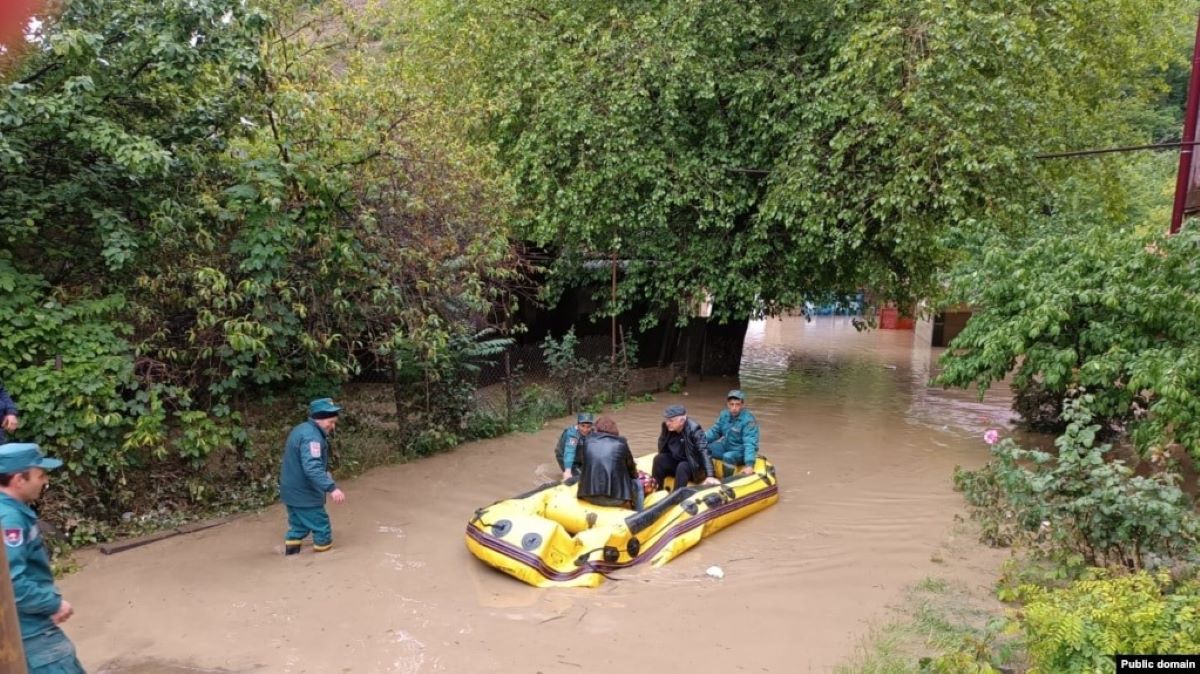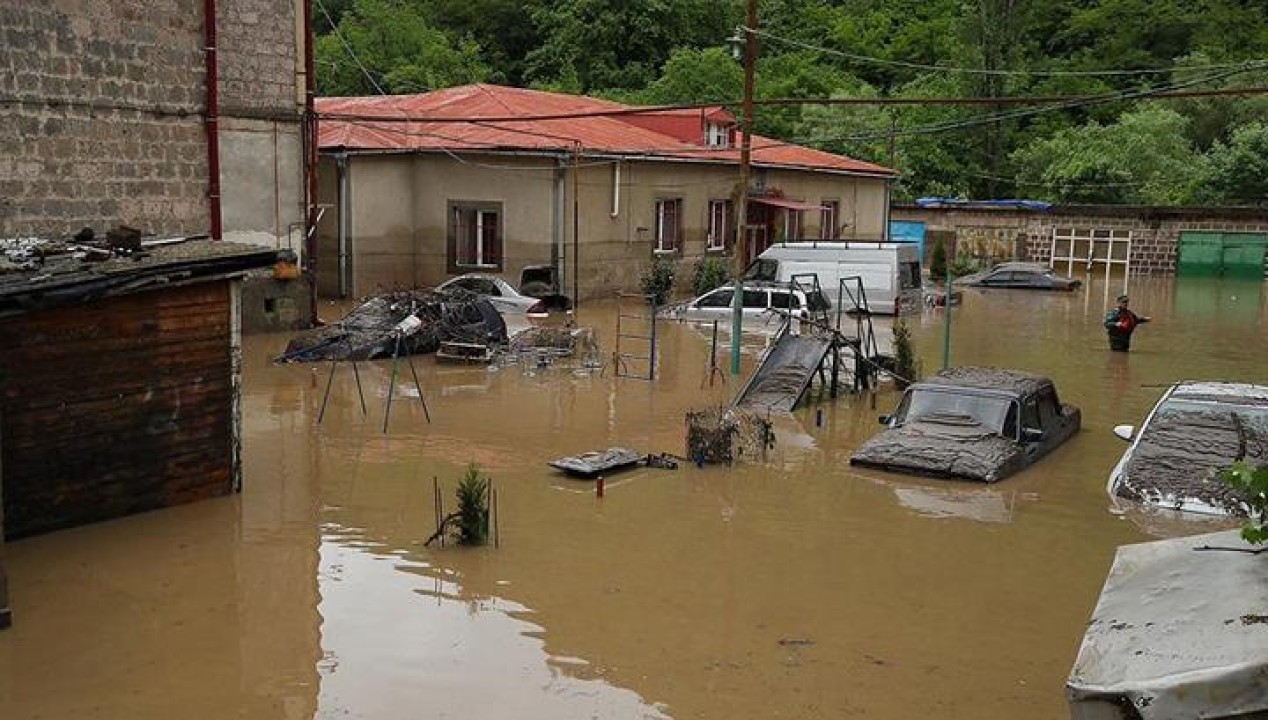"Restoring the railway is a matter of economic security for Armenia" – Opinion
Railway restoration in Armenia
Due to flooding in Armenia, the railway tracks in Lori Province have been significantly damaged. Rail service has not yet been restored. Reports indicate that the tracks are damaged in eight sections, totaling 2.5 kilometers.
Prime minister Nikol Pashinyan announced that an agreement has been reached with Russian partners to carry out restoration work. Russian Foreign Ministry spokesperson Maria Zakharova stated that specialists have been sent to Armenia to work with local colleagues to ‘find solutions to the complex problems related to infrastructure restoration.’
According to economist Suren Parsyan, if the railway’s operation is delayed, the country’s economy will suffer serious damage. He warns that prices for imported goods may rise and tax revenues may decrease. Parsyan believes that restoring the railway is a matter of economic security, noting that 80% of Armenia’s freight transport goes through Georgia, with which rail communication is currently impossible.
- Armenia to spend $2 billion on housing refugees from Nagorno-Karabakh
- “Delimitation of the border with Azerbaijan is a significant achievement” – Pashinyan
- “The ‘Russification’ of Georgia will complicate Armenia’s departure from Russia.” Opinions from Yerevan
“The railway will be restored as soon as possible”
Prime minister Pashinyan announced that deputy prime minister Mher Grigoryan met with Russian partners in Moscow, including the leadership of Russian Railways:
“Our Russian partners assured us that the railway will be restored as soon as possible, which is very important.”
In 2008, a concession agreement was signed between Russian Railways and the Republic of Armenia, transferring the state-owned Armenian Railway CJSC to the management of South Caucasus Railway CJSC, a 100% subsidiary of Russian Railways.
Until the railway is operational again, the government promises to find temporary solutions.
Gnel Sanosyan, Minister of Territorial Administration and Infrastructure, who heads the disaster response team, reported that until the railway is restored, cargo will be delivered to the Ayrum station:
“Adjacent to the station, there is a bridge that previously served a canning factory. It has long been out of service. Now we are transforming this railway bridge into one that can accommodate trucks.”
The minister assures that the work will be completed within the next 2-3 days, allowing trucks to cross the Debed River. From Ayrum station, they will transport various cargoes, including fuel, throughout Armenia.
Several companies are considering using this detour for exports, including the Zangezur Copper-Molybdenum Combine, one of Armenia’s largest taxpayers.
Railway restoration in Armenia
Russia always ready to “lend a helping hand”
Russian foreign ministry spokesperson Maria Zakharova commented on the aftermath of the flooding in Armenia, stating:
“As allies, we are always ready to lend a helping hand based on Yerevan’s needs. Specifically, South Caucasus Railway CJSC, which serves the Yerevan-Tbilisi route, is actively working on restarting railway services disrupted by the flooding. Our specialists from various fields have been dispatched to the site.“
It is known that mining engineers, geologists, and surveyors have arrived in Armenia.
Zakharova announced that Moscow will continue to provide the necessary assistance to restore settlements affected by the flooding. She noted that the Russian-Armenian Humanitarian Response Center immediately got involved in the disaster relief efforts, providing the Armenian rescue service with the necessary equipment. The Russian Ministry of Defense also expressed its readiness to mobilize the “appropriate forces of the 102nd Russian military base stationed in Armenia.”
Headquarters for railway restoration established
The headquarters is headed by the general director of South Caucasus Railway CJSC, Alexey Melnikov.
“Investigations have revealed that the railway tracks are damaged in eight locations. Additionally, four electrical substations and station centralization equipment are flooded, three engineering structures are damaged, as well as power lines of various voltages,” he reported.
The company, along with specialists invited from Russia, is conducting a detailed survey of all flooded areas, determining the scope of work, the technologies needed, and the amount of materials required.
Commentary
Economist Suren Parsyan reminds that a significant portion of fuel is delivered to Armenia by rail from Russia and other countries.
“If the restoration of the railway is delayed, it could cause substantial damage to our economy,” he said.
According to Parsyan, if the railway restoration is prolonged, prices for essential imported goods like gasoline could rise. However, if the delay is only a few weeks, society may not even feel the supply pause, as there are reserves. He mentioned that there is also the option of importing diesel fuel and gasoline by road, but this would increase the cost of fuel.
The economist warns that there could be issues with both imports and exports:
“Ores are primarily exported by rail. Specifically, Armenia exports 300,000-400,000 tons of copper concentrate annually. Around 20,000-30,000 tons might include ferromolybdenum, molybdenum, etc. There were years when we exported up to 50,000 tons.“
In Parsyan’s opinion, if the railway restoration takes longer than a few weeks, tax revenues to the state budget will significantly decrease.
Railway restoration in Armenia





















